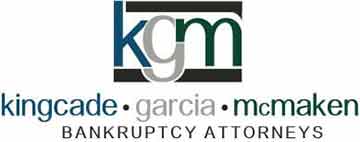Whether considering personal or small business bankruptcy options, Chapter 7 bankruptcy provides a debt relief option to consider. Chapter 7 bankruptcy allows parties to liquidate non-exempt assets to repay creditors and enjoy debt relief. Once the filing party has filed a petition for bankruptcy, a temporary automatic stay goes into effect that prevents creditor collection actions during the process and may provide some immediate relief for parties struggling with debt.
As part of the Chapter 7 bankruptcy process, the filing party is required to provide a schedule of assets and liabilities; a schedule of current income and expenses; a statement of their financial affairs; a schedule of executory contracts and leases that are not expired; a copy of their most recent tax returns and additional tax information as required; a certificate of credit counseling and repayment plan; and additional income and financial information related to tuition and education accounts. Additional detailed information may also be required.
The next step in the process is a meeting of the creditors in which a bankruptcy trustee is present and the filing parties is asked questions to ensure they understand the process. Once the process is complete, the filing party will receive a debt discharge. It is important to keep in mind that, although Chapter 7 bankruptcy is a liquidation bankruptcy process, certain assets, and categories of assets, subject to certain limits, may be exempt from the bankruptcy process. This can provide comfort to parties considering the bankruptcy process who may be concerned about having to start again from scratch following it.
Overall, the bankruptcy process is a legal option that allows a party struggling with debt to enjoy a fresh financial start. Because the bankruptcy process can be highly technical and complex, but also tremendously important for many individuals, it is important to thoroughly understand the process and the benefits it can provide when seeking debt relief.
Source: Bankruptcy.findlaw.com, “Chapter 7: How it Works,” Accessed Feb. 14, 2017


